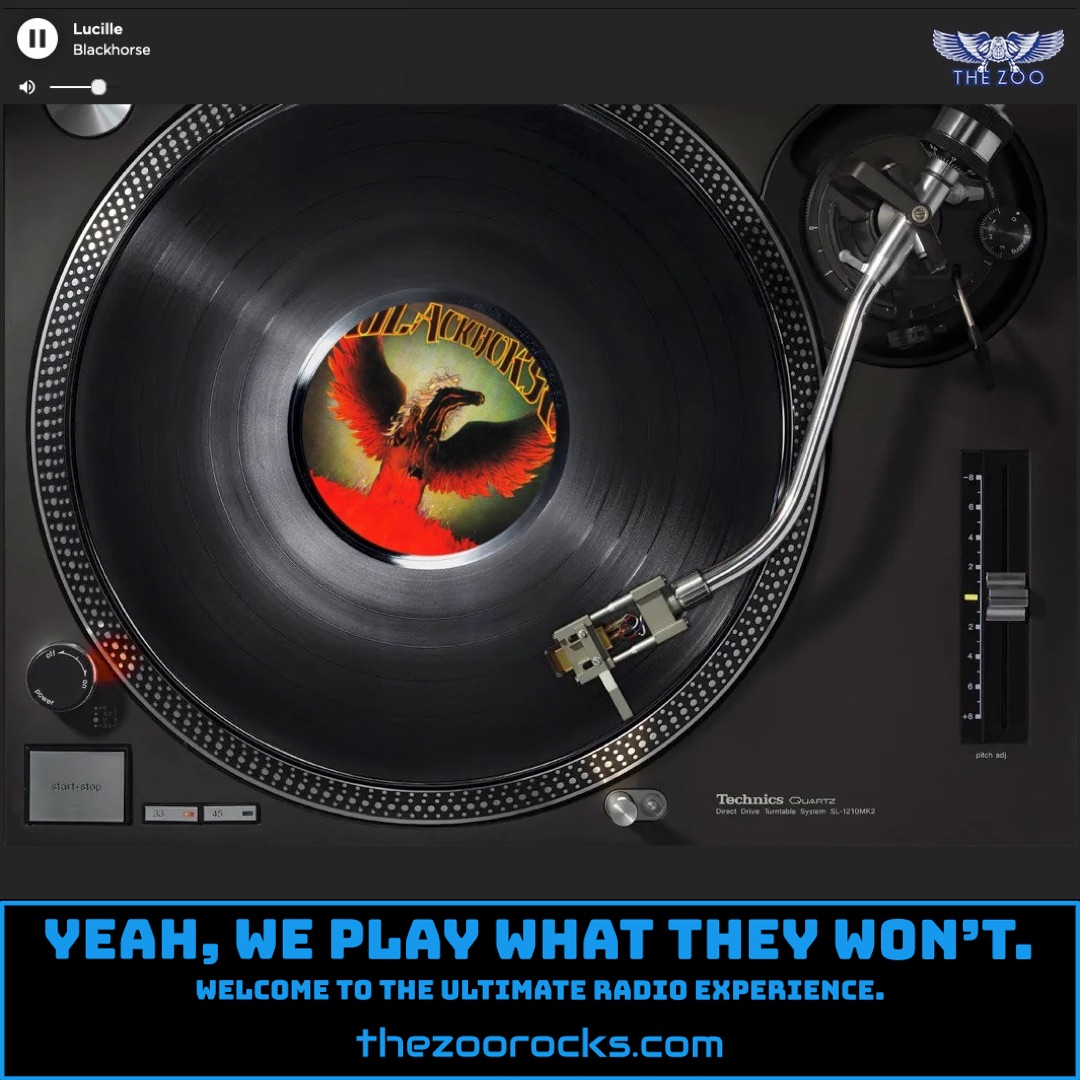Wild One
Thin Lizzy
The Zoo Crew is spinning "Wild One" by Thin Lizzy from their 1975 album Fighting, a track that’s got the Zoo Freaks vibing with its haunting guitar riffs and soulful edge. One piece of trivia about "Wild One" comes from fan interpretations shared on platforms like Songfacts, where a commenter named Chris Van Uden from the Netherlands suggested the song reflects frontman Phil Lynott’s longing for his mother, Philomena, who worked in England while he stayed with his grandparents in Dublin. This gives the song’s wistful tone a deeply personal layer, capturing the pain of separation. Another fan, Frank from Dublin, posted on the same site that the song might reference the "Flight of The Wild Geese," a historical event where Irish soldiers left for war, tying it to Ireland’s leaderless despair. These interpretations highlight the song’s poetic ambiguity, letting listeners find their own meaning in Lynott’s lyrics.
Another tidbit about "Wild One" surfaced in a review on Rate Your Music, which notes that the song was released as a single in Japan with the B-side "For Those Who Love to Live," a track Lynott wrote for soccer legend George Best. The reviewer points out that despite its quality, "Wild One" didn’t make a big chart impact, though Thin Lizzy’s live performances were gaining them a fierce reputation. The twin guitar harmonies of Scott Gorham and Brian Robertson, a hallmark of the Fighting album, shine in "Wild One," and as a Thumped.com reviewer put it, the song’s “wistful” vibe about being wild makes it an instant classic. Fun fact: Europe guitarist John Norum loved "Wild One" so much he covered it on his 1987 solo album Total Control, showing its lasting influence.
Thin Lizzy started in Dublin in 1969, born from a friendship between drummer Brian Downey and bassist/vocalist Phil Lynott, who met as schoolmates. According to Downey’s bio on Wikipedia, the two played in local bands like The Liffey Beats and Sugar Shack before teaming up with guitarist Eric Bell to form Thin Lizzy. Lynott, who became the band’s charismatic frontman, drew inspiration from his diverse influences—his father was Brazilian, and his mother Irish—and his love for poetry and Celtic mythology. The band’s name came from a playful nod to a comic book robot, "Tin Lizzie," tweaked to "Thin Lizzy" to mimic the Irish accent, as Bell explained in a story recounted on Wikipedia. Their early years were scrappy, with Lynott and Downey as the core, but by 1974, the addition of guitarists Scott Gorham and Brian Robertson gave them the iconic twin-guitar sound that defined Fighting and later hits like "The Boys Are Back in Town."
Lynott’s songwriting and stage presence made Thin Lizzy stand out, but their journey wasn’t easy. Early gigs saw them misbilled as "Tin Lizzy," and they nearly split over petty disputes, like Downey’s beard, as Gorham recalled in a Songfacts interview. Despite these hiccups, Lynott’s vision kept them pushing forward, blending hard rock, folk, and R&B into a unique sound. Sadly, Lynott’s death in 1986 ended the band’s original run, but their legacy lives on through tribute lineups and covers by bands like Metallica and Mastodon. Fans can connect with Thin Lizzy’s official channels on Facebook, Instagram, and X. For deeper dives, check out fan communities like the Thin Lizzy Fan Club on Facebook or the tribute band Brian Downey’s Alive and Dangerous, which keeps the spirit alive with Downey himself on drums.

